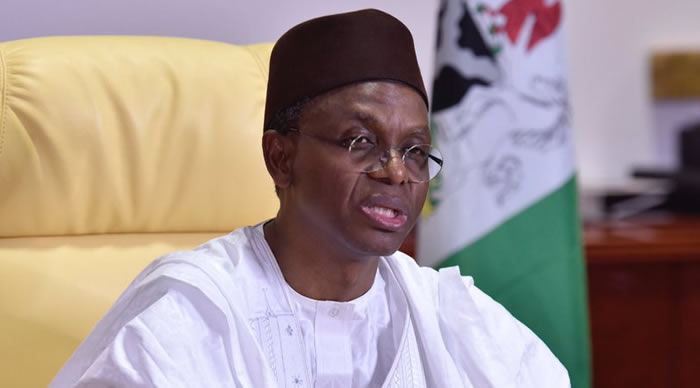8/1/2019/World Bank
Executive Summary
The outlook for the global economy has darkened. Global financing conditions have tightened, industrial production has moderated, trade tensions have intensified, and some large emerging market and developing economies have experienced significant financial market stress. Faced with these headwinds, the recovery in emerging market and developing economies has lost momentum. Downside risks have become more acute and include the possibility of disorderly financial market movements and an escalation of trade disputes. Debt vulnerabilities in emerging market and developing economies, particularly low-income countries, have increased. More frequent severe weather events would raise the possibility of large swings in international food prices, which could deepen poverty. In this difficult environment, it is of paramount importance for emerging market and developing economies to rebuild policy buffers while laying a stronger foundation for future growth by boosting human capital, promoting trade integration, and addressing the challenges associated with informality.
Global Outlook
Moderating activity and heightened risks are clouding global economic prospects. International trade and investment have softened, trade tensions have intensified, and some large emerging market and developing economies (EMDEs) have experienced substantial financial market pressures. Against this less favorable backdrop, EMDE growth has lost momentum, with a weaker-than-expected recovery in commodity exporters accompanied by a deceleration in commodity importers. Downside risks have become more acute. Disorderly financial market developments could disrupt activity in the affected economies and lead to contagion effects. Trade disputes could escalate or become more widespread, denting activity in the involved economies and leading to negative global spillovers. To confront this increasingly challenging environment, an immediate priority for EMDE policymakers is to brace for possible bouts of financial market stress, rebuild macroeconomic policy buffers as appropriate, and tackle adverse debt dynamics, all while sustaining historically low inflation. In the longer run, the need to foster more robust potential growth by boosting human capital, removing barriers to investment, and promoting trade integration remains.
Regional Perspectives
The rebound in EMDE activity has stalled. The cyclical upswing in regions with many commodity exporters has lost momentum, partly reflecting a substantial slowdown in some large economies, and is projected to plateau over the next couple of years. Growth in regions with large numbers of commodity importers was solid but has decelerated and is expected to stabilize around potential. For all regions, risks to the outlook are increasingly tilted to the downside. This edition of Global Economic Prospects also includes a chapter on the challenges associated with the presence of large informal sectors in EMDEs and policy options to address informality; a box on the prospects for continued low inflation in EMDEs; and essays on rising debt vulnerabilities in low-income countries and the implications of large food price spikes for poverty.
Growing in the Shadow
Challenges of Informality. Informal sector output on average accounts for about one-third of GDP and informal employment constitutes about 70 percent of employment in EMDEs (of which selfemployment accounts for more than a half). Informality is more widespread in less developed economies with large agricultural sectors and higher shares of unskilled workers. While sometimes providing the short-run advantage of flexibility and employment, a larger informal sector is associated with lower productivity, reduced tax revenues, and greater poverty and inequality. Overcoming the adverse implications of informality will require a balanced mixture of specific drivers of informality. A well-designed policy framework should include measures aimed at reducing regulatory and tax burdens, expanding access to finance, improving education and other public services, and strengthening public revenue frameworks.
The Great Disinflation
Emerging market and developing economies (EMDEs) have achieved a remarkable decline in inflation, from 17.3 percent in 1974 to about 3.5 percent in 2018. This achievement has coincided with an even sharper decline in inflation in advanced economies. The great disinflation in EMDEs has also been accompanied by growing inflation synchronization as evidenced by the emergence of a global inflation cycle. It has been supported by long-term trends such as the widespread adoption of robust monetary policy frameworks and strengthening of global trade and financial integration. More recently, the disruptions caused by the global financial crisis also contributed to the decline in inflation. However, a continuation of low and stable EMDE inflation is by no means guaranteed. If the wave of structural and policyrelated factors that have driven disinflation since the 1970s loses momentum or is rolled back, elevated inflation could re-emerge. If the global inflation cycle turns up, policymakers may find that maintaining low inflation can be as great a challenge as achieving it.
Debt in Low-Income Countries
Evolution, Implications, and Remedies. Debt vulnerabilities in low-income countries (LICs) have increased substantially in recent years. Since 2013, median government debt has risen by more than 17 percentage points of GDP and has shifted toward non-concessional and private financing. As a result, in most LICs, interest payments are absorbing an increasing proportion of government revenues. The majority of LICs would be hard hit by a sudden weakening in trade or global financial conditions given their high levels of external debt, lack of fiscal space, low foreign currency reserves, and undiversified exports. Efforts to reduce debt-related vulnerabilities are a policy priority for many LICs, and a key focus needs to be improving debt management and developing domestic financial systems.
Poverty Impact of Food Price Shocks and Policies
In the event of large swings in world food prices, governments sometimes intervene to soften the impact on domestic prices and to lessen the burden of adjustment for vulnerable groups. While individual countries can succeed at insulating their domestic markets from shortterm fluctuations in global food prices, the collective intervention of many countries may exacerbate the volatility of world prices. Policies introduced during the 2010-11 food price spike may have accounted for 40 percent of the increase in the world price of wheat and onequarter of the increase in the world price of maize. Combined with government policy responses, the 2010-11 food price spike tipped 8.3 million people (almost 1 percent of the world’s poor) into poverty.














